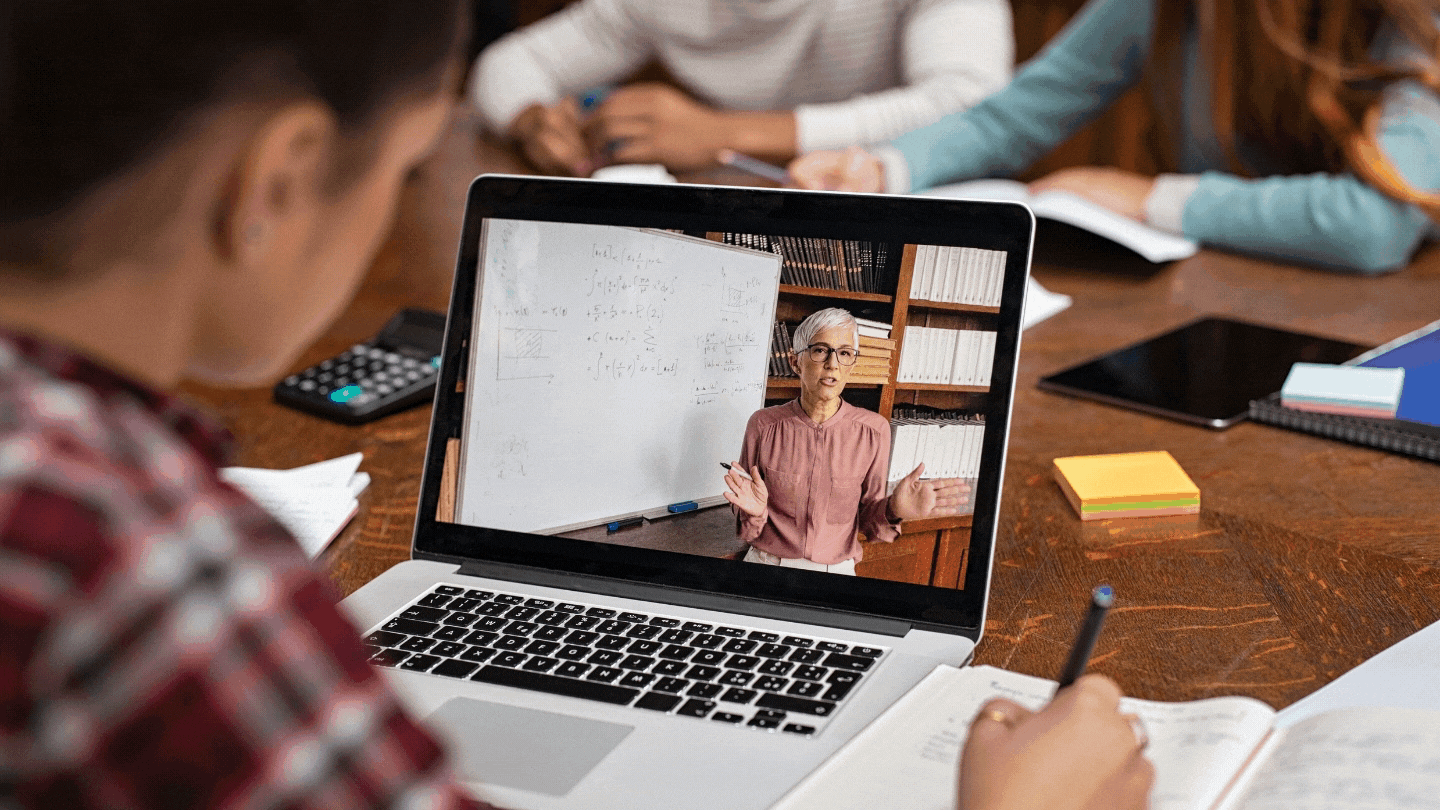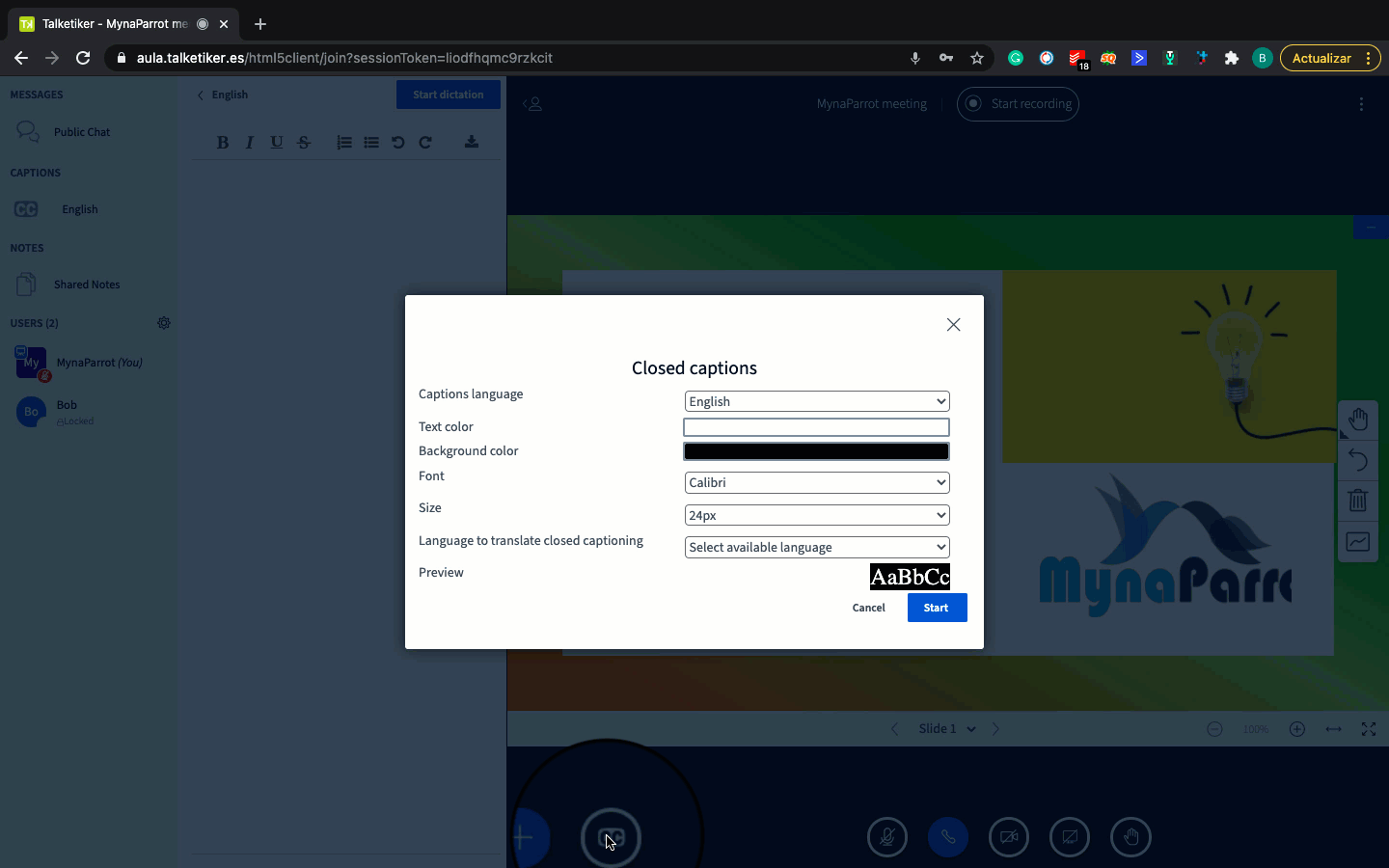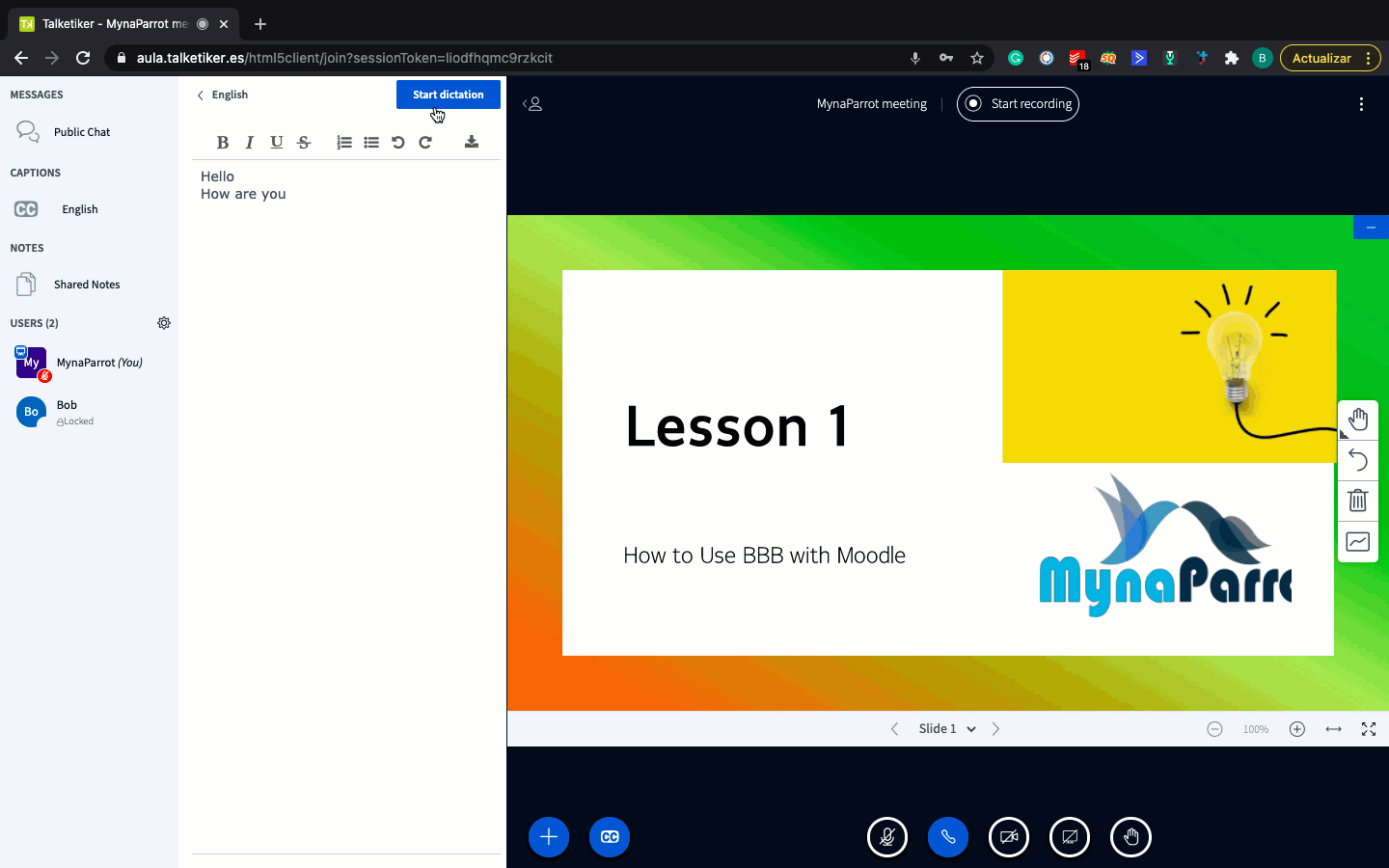What is Live Captioning?
When we refer to live captioning, it means that it can automatically transcribe closed captions that appear on the screen as people talk.
Additionally known as subtitles, live subtitles, closed captions, and automated video captions.

Live captions have limitations. Generally, they're not perfect, and the quality varies according to the provider. Some programs have greater captions than others, whereas some don't provide them whatsoever. Frequently, when the functionality does exist, like in BigBlueButton, a lot of people don't know how to turn them on.
How Captions Improve Accessibility in Video Conference Meetings
The TV exploded in popularity way back in the 1950s. But it took until 1972 for TV to become available to deaf and hard-of-hearing viewers. "The French Chef" made history by becoming the first television program to supply captions.
Since then, many technologies and laws have been made to improve the lives of the deaf and hard of hearing. There are vibrating alarm clocks, smoke detectors with flashing lights, and doorbells that provide visual alerts. But almost 20 decades after, many deaf and hard hearing individuals do not have access to the technology.
Luckily, times are changing. Now we can automatically convert everything that is said on a video call into closed captions in real-time.
Listed below are three ways that Live captioning improves accessibility in video conferencing.
1. Captions Improve Accessibility for Education From Home
Then the COVID-19 pandemic erupted. Today, schools are closed across the U.S, and 46 percent of American businesses have implemented remote-work policies.
Because of this, video conferencing tools like Skype, Google Meet, Zoom, and BigBueButton have become essential to educators and professionals overnight.
The increasing reliance on video conferencing is making things more difficult for individuals with disabilities. Generally, deaf and hard of hearing students cannot take part in streamed lectures or video conferencing classes. Educators must find ways to deliver an equal education for deaf pupils, according to the Individuals with Disabilities Education Act (IDEA). Live captioning can help to solve these issues.
By transcribing everything said on a conference call in real-time, disabled people can access instruction and communicate efficiently from home.
In other words, students may take part in live-streamed classes and conference calls with teachers.
2. Captioning Reduces Dependence on Other Accessibility Tools
It's costly to provide access to education for the deaf and hard of hearing. On average, the life cost of education for people suffering from hearing loss is a whopping $115,600 per kid. Additionally, it is quite time-consuming and involves a lot of moving parts.
According to the National Center for Education Statistics, out of 5,000 post-secondary educational institutions with at least one deaf or hard of hearing student, only:
67% provided sign language interpreters
20% supplied oral interpreters
75% supplied classroom note-takers
65% supplied tutors to assist with ongoing coursework
33% supplied listening devices
To put it another way, not every student receives the support they want. Since Lydia Callis, a Nationally certified sign language interpreter, wrote in Huffington Post,"Education programs for deaf and handicapped individuals in this nation are in an unfortunate condition, and in even further danger as more children are enrolled in mainstream schools which are underfunded, lacking in service, and just not equipped for people with specialized educational requirements."
Live captioning can help reduce the deaf and hard of hearing dependence on these other aids. By way of example, this straightforward and affordable solution reduces interpreters' need as the deaf and hard of hearing can see what people say in real-time.
3.Improve listening comprehension for ordinary students.
Even today's technology is improved a lot, but students will sometimes suffer bad audio or video experience during online classes. The reason varies, maybe because of poor internet, hardware problems, browser problems, and usually, it take time to fix it.
If we have the live captioning feature enabled, students can read the subtitles for what teachers say and dramatically improve listening comprehension.
How to enabling closed caption on BigBlueButton
Log in as a moderator/teacher role,
✓ Click the gear icon.
✓ Select write closed captions
✓ The user should enable CC options.
✓ When you write closed captions, meantime it will show the subtitles.

-Enable Live captioning
✓ Enable the dictation at the closed captions window.
✓ BigBlueButton System will transcript your voice to text.
✓ No need to manually input the text for captions.
✓ Users can see the live subtitles at the same time.

As I said in the beginning, Live captions have limitations. the quality varies according to the provider. Some programs have greater captions than others, whereas some don't provide them whatsoever. MynaParrot BigBlueButton has increased the results performance by integrating Microsoft Speech to Text technology and can give better results on the texts generated.
If you want to test, please Contact Us
Further more, you can watch this video for a demo.




